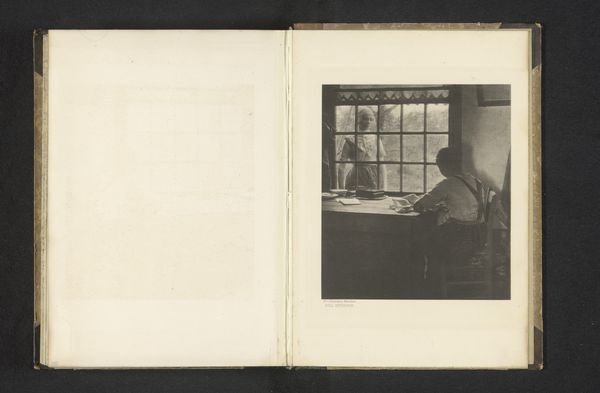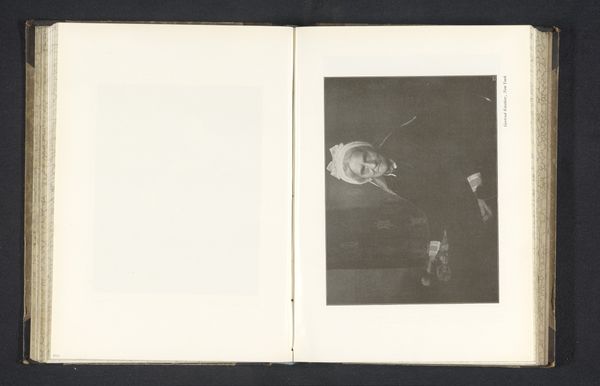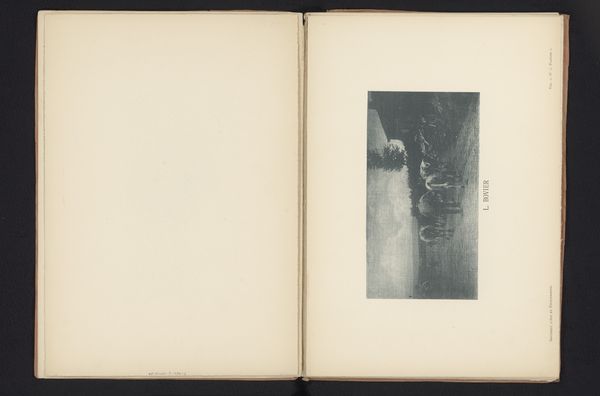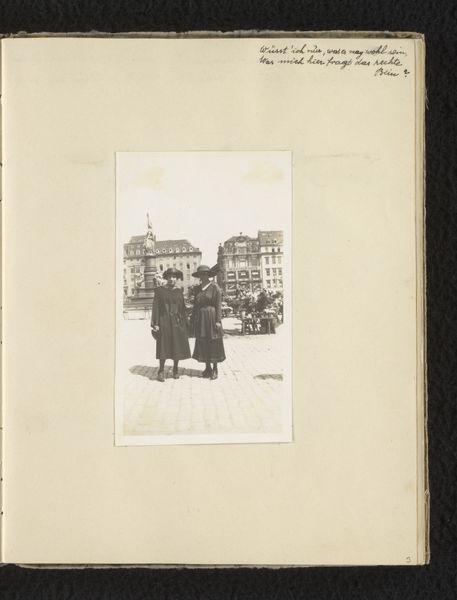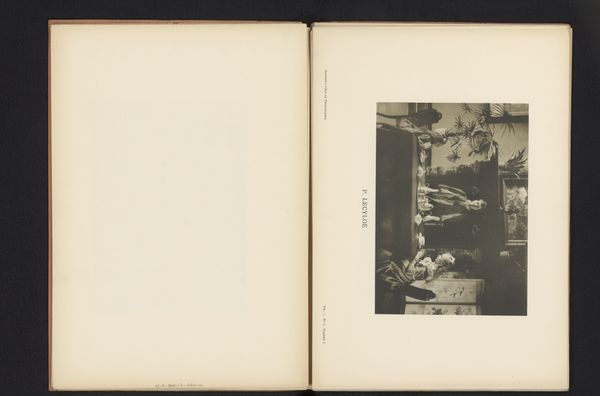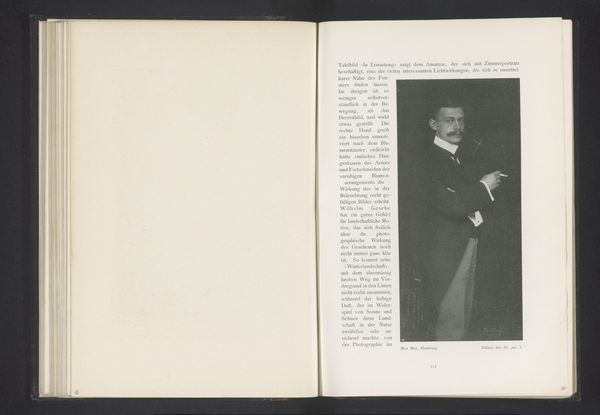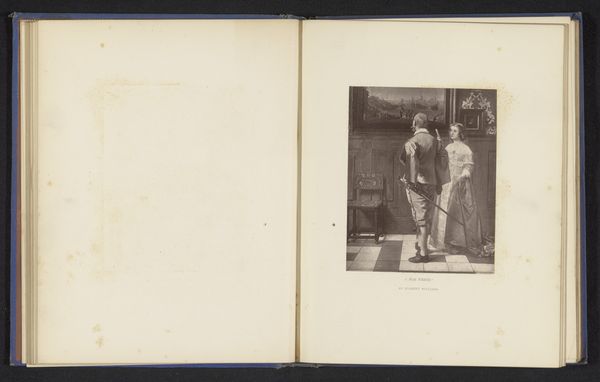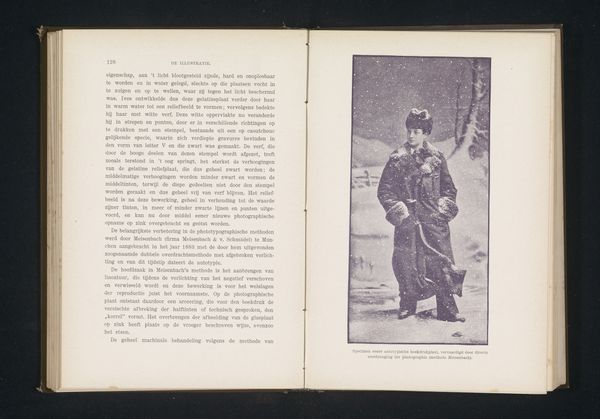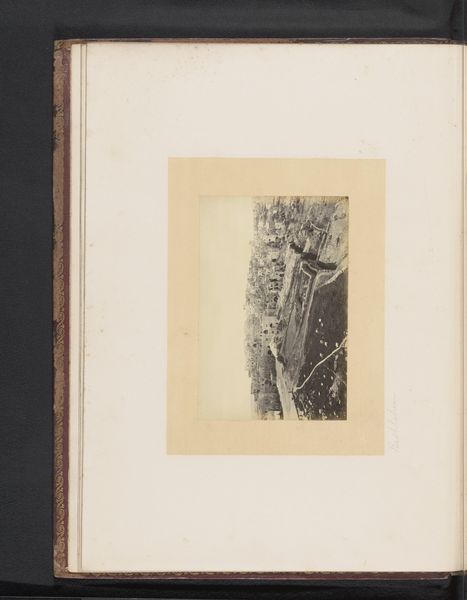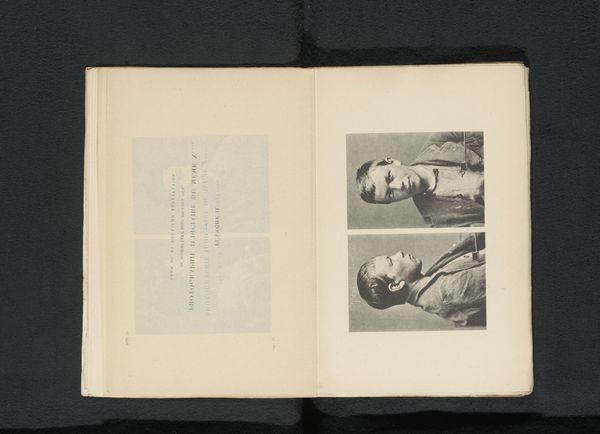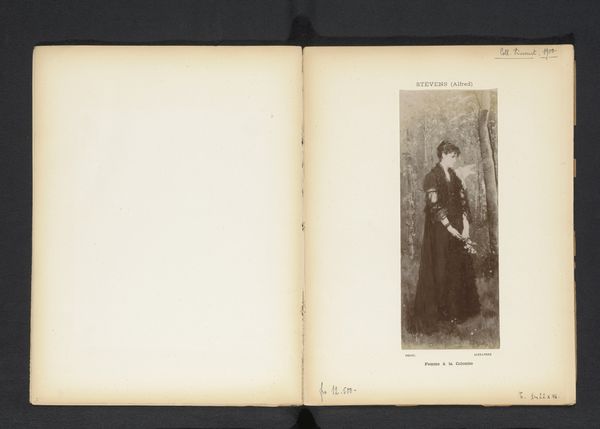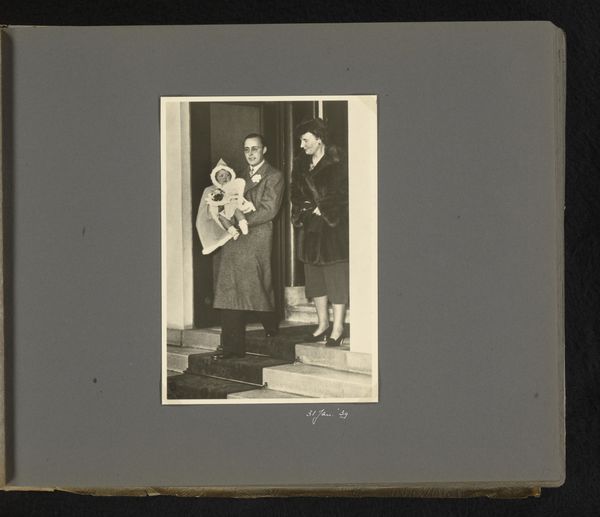
Dimensions: height 333 mm, width 266 mm
Copyright: Rijks Museum: Open Domain
Curator: William Nicholson's woodcut, "Man op Newgate Street," created around 1898, offers a striking figuration through simple line work. What catches your eye first? Editor: The stark contrast, definitely. The powerful interplay of light and shadow creates a sense of unease and confinement. It's austere, almost prison-like in its geometry. I am curious how the artist approached the person portrayed. Curator: That's perceptive. The high contrast is essential to Nicholson's approach. He uses this contrast, characteristic of his printmaking, to isolate forms. Structurally, look at how the grid behind the figure intersects with the horizontality of the ground. It's an intense visual compression, almost like a stage set. Editor: Indeed. That backdrop – the bars perhaps - hints at institutional spaces, immediately positioning the subject in a certain social context. Newgate Street, after all, was known for its prison. The subject’s clothing suggests clerical garb, yet the face is inscrutable. Is he condemned or warden? How can we reconcile religion and oppression here? Curator: An insightful observation, of course. The reduction of form to pure black and white shapes denies easy access to a personal narrative. Instead, notice how the strong verticality of the figure is counterbalanced by the flat planes of the cobblestone pathway, achieving a compositionally satisfying whole. It is an interesting reduction to essential components. Editor: And yet, these reductions speak volumes! The ambiguity, born from his almost featureless form, begs for narratives of authority and marginalization. The fact he does not make direct eye contact can indicate avoidance of authority in a time of constant scrutiny, perhaps reflecting societal power structures and who held positions within those establishments in turn-of-the-century London. Curator: Perhaps we should appreciate Nicholson's abstract understanding, instead of attributing imposed narratives of the time. What interests me is how, with incredibly basic geometry, this evokes depth of place in pictorial space. Editor: It's a powerful, if unsettling, reminder that visual economy can be politically potent. These figures are often representative of many during a specific era. Curator: Well said. An interesting work both from the formal standpoint, and the interpretation of symbolic narrative.
Comments
No comments
Be the first to comment and join the conversation on the ultimate creative platform.
